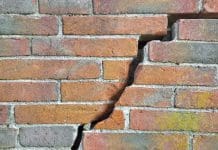BSRIA’s Microclimate Team leader, Dr Blanca Beato-Arribas, looks at the importance of Indoor Environmental Quality in the new age of wellbeing
We spend over 80% of our time indoors, perhaps a little more since lockdown began. Recent publications about the poor air quality (AQ) in our towns and cities, coupled with investigations on the link between AQ and coronavirus transmission, as well as intensifying climate change lobbying, are making people increasingly aware of the importance of good air quality.
Contaminant sources from building materials or human behaviour indoors, can make the indoor air eight to 10 times more polluted than the exterior air, according to the World Health Organisation (WHO).
More and more studies are beginning to report the increase in employees’ productivity and the reduction in sick leave when wellbeing is considered, and the subsequent economic benefits it brings.
Despite, this, some employers and building owners tend to be reactive rather than proactive, neglecting the maintenance of the ventilation systems. Indoor air quality (IAQ) at work is measured when it is obvious staff may be at risk, following specific HSE procedures for special contaminants or industries, but in an office environment, measurements tend to be carried out when there are scheme points to be achieved or when there are sick building syndrome-related complaints.
Avoid Indoor Environmental Quality problems
Some IAQ-related problems could be avoided if it was considered at design stage, eg the location of supply and extract grilles in the building, the assumption that outside air is fresh, the selection of filtration, the selection of building and furniture materials, design for effective ventilation, etc.
The next steps would be proper commissioning and maintenance of the ventilation systems. Duct cleaning and filter maintenance should reduce the levels of external contaminants, such as PM 2.5 and PM10, being brought into the space. Checking and limiting condensation and the use of UV lights should stop bacteria from growing in the ventilation systems and being spread in the building by the ventilation system itself. Controlling humidity levels and ensuring the right ventilation in places such as kitchens and bathrooms should also stop mould from growing.
Well designed, effective ventilation should remove most pollutants and odours in a common office environment. Isolating the source of contaminants should also be considered: eg some printers release ozone, which is a contaminant, so having the printer in a ventilated room or open area, rather than in a closed room, should help.
An informed approach
IAQ does not consist only of measuring the temperature, humidity and carbon dioxide (CO2) in a space but measuring for a long list of contaminants can be expensive, so an informed approach must be found. The level of CO2 in an occupied space is a good indicator of the general IAQ and overall ventilation effectiveness, but it is only meaningful if the space is occupied.
Human behaviours (eg the use of perfumes and cleaning products), office furniture and building materials are sometimes a source of Volatile Organic Compounds (VOC). VOCs are many and their effect on health can vary, depending on the contaminant (from causing respiratory system irritation to cancer). Measuring for Total VOCs (TVOC) as a whole and identifying the VOCs with the largest concentrations, can give an indication of where the problem is – it is not an expensive test.
Ensuring that the ventilation system is on (and working properly) can dilute the concentration of these contaminants, and proper selection of building materials can limit their release into the building, eg if the office is being repainted or refurbished, selecting materials that do not have a high VOC emission rate and flushing the building should reduce the VOC concentration levels.
Contaminants
The location of the building can indicate what contaminants to look for: eg if is next to a busy road, measuring for nitrous oxides (NO, NO2) and particulates (PM2.5 and PM10) should be considered. If the building is on a Radon (Rn) area, checking Rn levels in the building and investigating ventilation solutions should be a priority, as exposure to Rn, which is naturally released from the ground, can cause lung cancer.
Indoor environmental quality (IEQ) looks beyond IAQ and considers the wellbeing of people in a holistic way. IEQ looks not only at air quality, but also includes lighting, acoustic and thermal comfort, and some wellbeing standards also take nourishment, water quality, ergonomics, electromagnetic frequency levels and building aesthetics into consideration.
In summary, approximately 90% of the associated costs of a building are staff-related. IEQ not only affects people’s health and productivity but also has an impact on the building management, eg it makes it a desirable space to sell or rent, or it requires extensive and costly investigations to rectify. Therefore, providing good IEQ at work should be a priority for employers.
Dr Blanca Beato-Arribas
Microclimate Team Leader, BSRIA Test
Building Services Research and Information Association (BSRIA)
Tel: +44 1344 465600
Please note: this is a commercial profile.

















